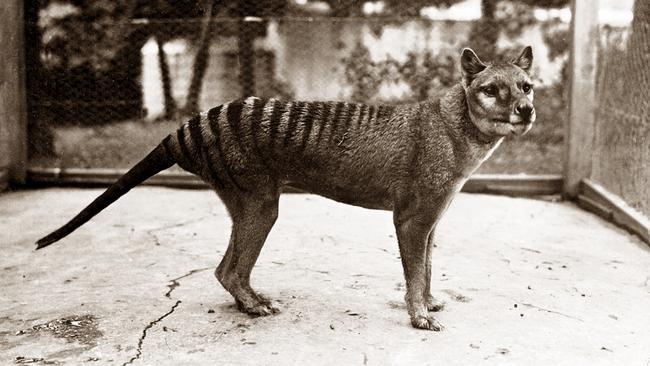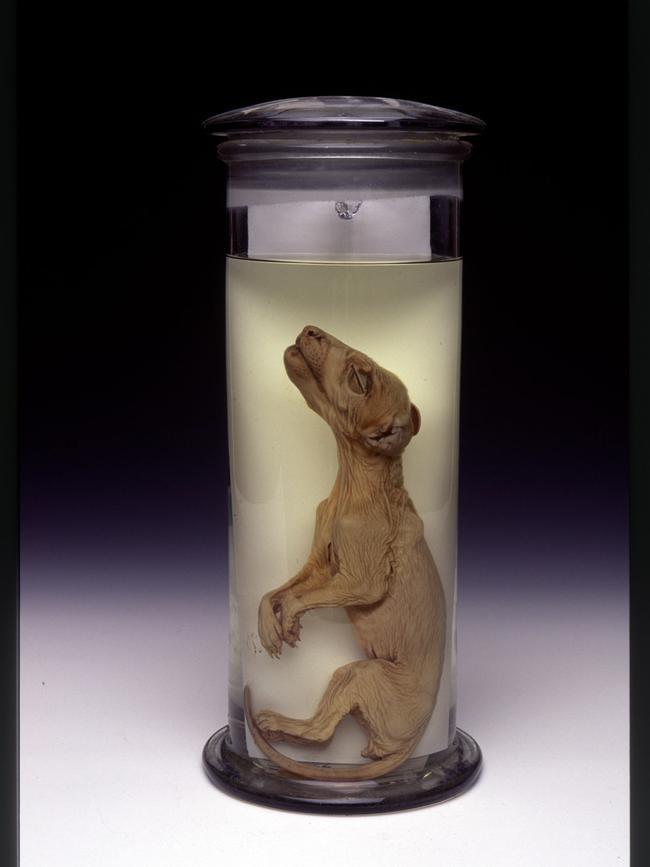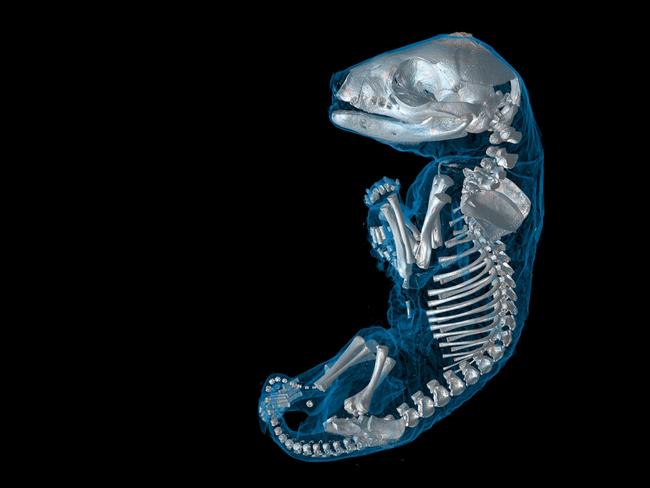Colossal Biosciences provides behind the scenes look at thylacine revival
The beloved Tassie tiger could be brought back from extinction – and here’s how.
Tasmania
Don't miss out on the headlines from Tasmania. Followed categories will be added to My News.
A preserved thylacine pup from the early 1900s is the key to bringing the species back from extinction, a director working on the groundbreaking scientific project has revealed.
American company Colossal Laboratories and Biosciences is leading the charge to revive the Tasmanian tiger, along with the woolly mammoth and the dodo.

In October, the group predicted the marsupial could be resurrected as early as 2028, but that the company “wasn’t committed to the hard timeline”.
In a behind the scenes look at the laboratory in Texas, where the ambitious scientific endeavour is taking place, director of species restoration Sara Ord provided an update on the project.
“Right now they’re at the cellular level,” she said.
“For the Thylacine, we’re using the dunnart as our model species, the closest living relative.”
Ms Ord there was a particular genetic sample which made the science possible: a sample from a Melbourne museum, where the thylacine DNA could be harvested from.
“There was a brilliant museum curator in the early 1900s who decided to place a couple of thylacine pouch young, or pups, in ethanol,” she said.

“Usually when you have museum samples, they’re in formaldehyde and other harsh chemicals, it preserves the tissue really beautifully but it doesn’t preserve the DNA.
“But the ethanol did preserve the DNA so that we were able to do a high quality reference genome for the thylacine.”

The project is being done in collaboration with University of Melbourne biology professor, Andrew Pask, who has been exploring the idea of reviving the species for more than 15 years.
Colossal has raised more than $225m for its de-extinction research and in October, CEO Ben Lamm said it was not seeking funding from the Tasmanian or Australian government on the project.
He said the cost was estimated to be an “eight figure amount” for the Tasmanian tiger.
In December, a Tasmanian advisory committee was formed to consult and a discuss the project.
There are 12 members, including Derwent Valley mayor Michelle Dracoulis, Aboriginal advocate Peter Rowe and wildlife advocate and rescuer Greg Irons.





